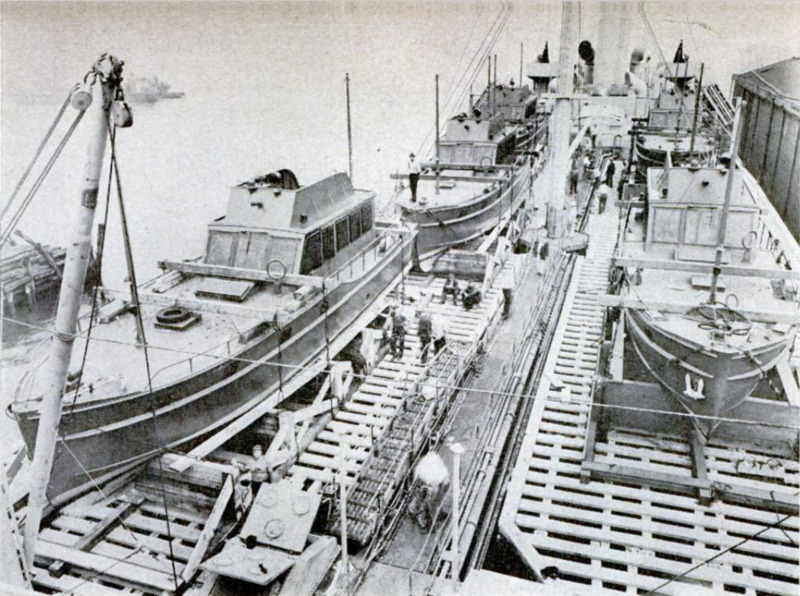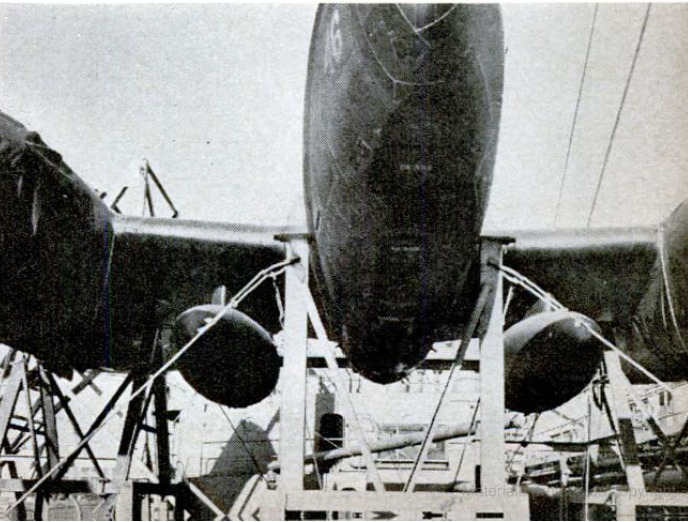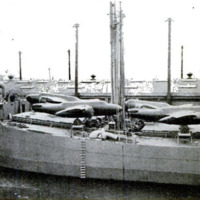Addition of removable decks to increase the capacity of Allied merchant ships
Item
-
Title (Dublin Core)
-
Addition of removable decks to increase the capacity of Allied merchant ships
-
Article Title and/or Image Caption (Dublin Core)
-
Pickaback cargoes
-
extracted text (Extract Text)
-
SINCE 1940, through the ingenious
addition of skeleton “upper stories”
to their decks, Allied merchant ships
have consistently been loaded to 10 per-
cent above normal without having a
single piece of cargo washed overboard,
it has been revealed by the War Ship-
ping Administration. These new “phan-
tom” decks are intermittently spaced
tables that rise 15 feet from the original
top deck, thus affording clearance for
waves.
The cargo is lashed to the ship proper
by wire cables connected through turn-
buckles to sturdy pad eyes welded solid-
ly to the deck floor, and the supporting
tables are themselves bolted to steel
holders or angles also welded to the
deck. These angles and pad eyes can
be burned off with acetylene torches
within a few hours after a freighter
or tanker docks, if the decks must be
cleared for new kinds of cargo.
Credit for the development of the
scheme is due the West Side Iron Works
—in 1939 a modest blacksmith’s shop
in New York's Greenwich Village, and
today a huge business with 11 plants
and a national reputation for ingenuity
and efficiency.
-
Language (Dublin Core)
-
eng
-
Date Issued (Dublin Core)
-
1944-03
-
pages (Bibliographic Ontology)
-
73
-
Rights (Dublin Core)
-
Public Domain (Google digitized)
-
Archived by (Dublin Core)
-
Lorenzo Chinellato
-
Marco Bortolami (editor)
 Popular Science Monthly, v. 144, n. 3, 1944
Popular Science Monthly, v. 144, n. 3, 1944






